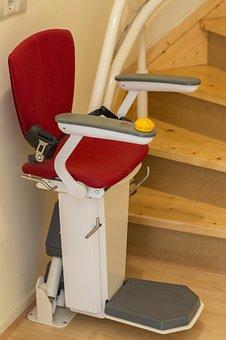|
Buying a home with an elderly parent after the loss of a spouse can be a trying experience. There’s the difficulty of two people set in their ways moving in together and making room for each other. Then there’s the need to figure out what you’ll need to get rid of, and how you’ll store what you won’t have room for. And it’s likely your parent may not be in a condition to do much prepping or packing, so you’ll need to take control of those details, arranging for everything to be packed, loaded and moved. What to look for Look for a home that has wide doorways and easy exterior access, either with an access ramp or no front steps. A first-floor bathroom is a preferable option, especially if your parent has difficulty using stairs. A house with soft flooring, such as cork or vinyl, is preferable to tile or hardwood. Remember that low-pile carpeting is preferable to shag or deep-pile carpeting. If you need a lot of interior painting or staining done, consider looking for a reputable local company. DIY When it comes to moving, you have two options: hire a professional to handle all the prep work or do it yourself. Unless you can afford the cost of hiring a professional moving company, it’s worthwhile handling the packing yourself and letting the pros take care of the heavy lifting. They’re experts at loading and unloading your belongings safely, and they’re fully insured. If you don’t have the time to pack it all up yourself, ask the mover about full-service packing. If that isn’t an option, you’ll probably want to start calling up friends and relatives who can help you get it all done. Extra stuff It’ll probably take some time to figure out what to do with all the belongings your parents accumulated over the course of a lifetime. It’s clear that not everything can come with your parent, so set aside some time to go through everything with your parent and decide what to throw away, what can be donated, and what an be sold. It’s easy enough to donate belongings to the Salvation Army or Goodwill. And don’t forget you can turn those unwanted old items into cash by selling them on Craigslist or eBay. Preparing the way Perhaps the most important step in the process is ensuring that your new home is adapted for the needs of your elderly parent. This can be a challenging proposition, especially if your parent has significant mobility problems. You may need to adapt a room on the first floor as a bedroom if your mom or dad can’t get up and down stairs anymore. It may be necessary to hire a contractor to create a bedroom space if your first floor has limited rooms. Or you may want to consider looking into an automatic stair lift, though be aware that this can be a pricey option. If your parent’s bedroom will be on another floor, there should be a bathroom nearby on the same floor. Bathroom space The bathroom is one of the most dangerous rooms in the house for seniors. In fact, more older adults fall in their bathrooms than any other part of the house. Place non-slip mats or rugs on the floor in front of the sink and toilet, and make sure there’s one in the bathtub or shower stall. If your parent has severe mobility issues, consider installing a no-step shower to reduce the likelihood of a fall. Many seniors make good use of shower chairs to eliminate the need to stand for an extended period. Grab rails should be installed alongside the toilet and in the tub or shower area. Living with an aging parent is a major life adjustment. Suddenly, you’re a roommate and a caregiver, which can be a difficult change for anyone. If your home is well-adapted to your parents’ needs, it can be a rewarding and enriching experience for both of you. Courtesy of Pixabay.com. Article submitted by: Lucille Rosetti
0 Comments
Leave a Reply. |
Archives
July 2024
Categories |

 RSS Feed
RSS Feed